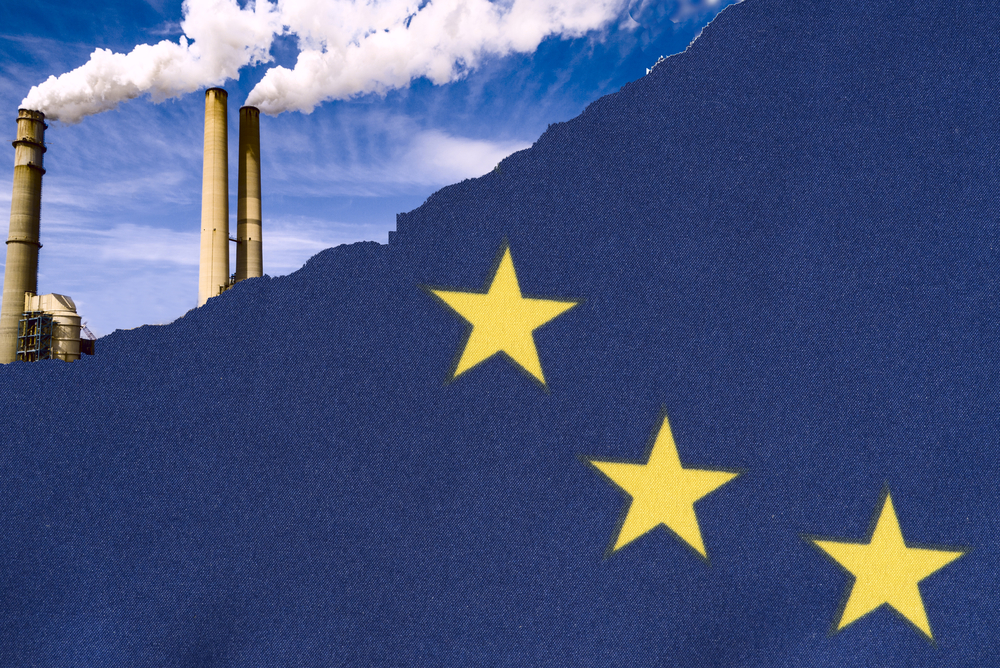Russia’s invasion of Ukraine has changed the world overnight. Despite this, for some politicians it is unmistakably business as usual. Andrej Babiš, for example, is again calling to abolish the emission allowances as if it were a solution. But apparently, he is not alone being somewhat puzzled about how the state of our natural resources, energy and security policy are linked. How to get out of this situation?
One: The war in Ukraine does not mean that the old problems have disappeared
While the average European opinion sees Putin’s tanks as just another reason to accelerate the transformation of the economy and energy sector and no longer depend on fossil fuels, in the Czech Republic, even on the day the war was declared, voices emerged triumphantly calling for “the end of the green dream”. Supposedly, the Green Deal is dead, decarbonisation will happen, and even more stringently, but not for the sake of some climate goals, but for the sake of national security and the survival of humanity.
I don’t want to offend anyone, but the authors of these views are simply making fools of people. They are trying to tell us that there are no risks in the world, or at least we do not have to worry about them until the tanks come to our borders. But brute force and military aggression usually come only as the last stage of some long-standing unresolved problem. And it is those long-term, ticking, unresolved problems that threaten us most.
Clearly climate change is closely related to national security and human survival! More and more countries will find themselves in some type of emergency because of it – whether for lack of water, too high a temperature, loss of crops, floods or devastating storms and hurricanes. The debate on climate change is not about where the ocean levels will be in thirty years’ time; it is about the fact that we are destroying the conditions for life on the planet, and in various parts of the world this is causing humanitarian and security problems that can easily escalate into major waves of migration and wars. So, on the contrary, the Green Deal is no naïve “green dream” – it is very pragmatic policy driven by the desire to prevent the collapse of the world as we know it.
Two: The main problem is still that we are dependent on fossil fuel imports
Over the last 20 years, Europe’s import dependency for energy consumption has increased by around 5% (from 56% in 2000 to 61% in 2019). This is due to a number of factors, including the dwindling resources of the Groningen gas field in the Netherlands and the North Sea, which made Europe relatively self-sufficient in gas production in the 1970s.
However, this gas is no longer available, while energy consumption is growing in the EU (as elsewhere in the world). As a result, we have become more and more dependent on imports of energy commodities from outside the EU in recent years. It is the Green Deal that provides the answer to this problem. We have no other common European path ahead of us. Its aim is to reduce the dependence of European economies on all fossil fuels – oil, coal and gas in particular – and to replace them with renewable resources that we can produce ourselves in Europe.
Three: The fossil fuel business is run by oligarchs that we must no longer back down from
Moreover, the Green Deal also addresses another major problem with fossil fuel international trade that we can no longer turn a blind eye to. The oil, gas and coal trade is firmly in the hands of giant long established companies, usually closely linked to the state. At the same time, if such a state is led by autocrats with great power ambitions, this creates a rather unpleasant situation for its neighbours and trading partners.
Look at the overall figures. The Russian Ministry of Finance reported revenues from oil and gas sales of USD 120 billion in 2021. Meanwhile, Gazprom’s own gas revenues doubled in the second half of the year. There is no other way to put it in today’s terms: Russia has raised energy prices for the Europeans and is now using them to finance the war.
But the close link between the state and the energy business is not just a problem with Gazprom, which in recent years has behaved on the European market not as a market company but as an instrument of Vladimir Putin’s will. The unhealthy convergence of the business interests of the fossil fuel giants’ owners and state policy can also be seen in the case of PGE, the state-owned mining group in neighbouring Poland. State-owned energy companies can easily abuse their position to pressure and blackmail democratically elected governments of independent states. The events of recent days have, in my view, given us a clear and compelling reason to put an end to this.
Four: We can solve the Russian gas shortage, but it won’t be cheap
It is not realistic to privatize Gazprom and make it a market company, not while Vladimir Putin is the head of Russia. So, we need to make do without Gazprom and Russian gas in general and start importing gas (or something else) from other suppliers within weeks or months.
Over 40% of gas imports to the European market come from Russia, most of it flowing through the Yamal and Ukrainian transit pipelines. Annual pipeline imports from Russia currently amount to about 1 550 TWh, with more than 150 TWh more arriving here in tankers on ships in the form of liquid gas (LNG). This is less than in previous years, with storage levels in Europe at a record low this year.
The remaining 60% or so of imports come to us via other routes, whether pipelines from the south and north or LNG terminals typically in southern European countries. So, we can increase our offtake from these sources. Their capacity theoretically allows us to increase our offtake by up to 1 800 TWh of imports, roughly the same amount as Russia imports today. We can import liquefied gas from the Scandinavian countries, Australia, the USA or Qatar. What we do not know at the moment is how much will be available and at what price. Unfortunately, we cannot expect the price to be very good.
Five: Gas won’t be so scarce that people can’t heat their homes
Even if we replace the current Russian gas imports to the EU, it will not solve our long-term energy balance. Current supplies from Russia are at a minimum compared to previous years, and it is unlikely that we will be able to cover the entire shortfall without any losses. We will therefore have to look at whether we can replace the gas with another source in some instances or reduce our energy consumption in general.
Gas consumption varies quite a lot between European countries (you can click here to see the individual countries). There are regions such as the Netherlands, Romania or northern Italy where gas is used a lot for the production of electricity. In the Czech Republic, natural gas plays a major role in the central heating systems. If we look at the sectors in which gas is consumed (here is the chart at the bottom of the page), industry plays the biggest role, with electricity production and households consuming roughly the same amount, each of those sectors around 25-30%.
Meanwhile, almost two-thirds of Europe’s gas imports still flow as before, because it does not come from Russia. It is clear from this that there is no way we could get into a situation where “people are freezing because there is no gas in the EU”. If anyone is going to cut back, it will be the industry, and I add in the same breath that even that would be extremely unpleasant, and it would be better if it were avoided. But it is certainly not the case that there is a real threat of an absolute shortage of gas for household consumption.
Six: In the long run, a clean transition is the only way not to be blackmailed and destroyed
It’s clear that this is still only a temporary solution. So, what’s next? The Green Deal (or the taxonomy that follows it) envisages gas as a temporary, transitional fuel, possibly usable to smooth out fluctuations in the energy grid (as a backup for renewables). There are two ways of managing without gas in this matter. Either we can reduce the need for backups through more efficient grid capacity and allocate energy according to actual needs, this could be done by massive digitalization of the transmission system (imagine a kind of Internet of Things in the energy grid).
Or we could use an energy commodity other than natural gas for balancing. For example, hydrogen has this potential, and it has the advantage that it can be produced from a variety of primary sources (solar, wind, theoretically methane) and some of them are very cheap (typically solar energy from countries that have seas and lots of sun). Moreover, hydrogen can be transported in a similar way to natural gas, either liquefied on tankers or through pipelines. So, we could use the existing (upgraded) infrastructure to distribute it.
Hydrogen, and especially that produced from renewable sources such as the sun and wind, has another advantage. By being produced from cheap renewable sources, its production can be decentralised. Historically, state-owned giants have had a monopoly on coal or natural gas production, and the cost of entering the industry is extremely high for anyone else. For green hydrogen it is exactly the opposite, the input costs are getting lower and lower and it is hard to stop companies from going into production.
This is why, for example, a recent study by the international agency IRENA talks about green hydrogen as the missing link in the energy transition. A hydrogen energy economy does not need Gazprom or other oligarchic state firms, just good infrastructure subject to clear rules. In a market with a large number of smaller and medium-sized players, we will not be blackmailed with turning off the taps.


0 comments on “Mikuláš Peksa: Green Deal is more relevant today than ever; golden age of energy oligarchs is dead”